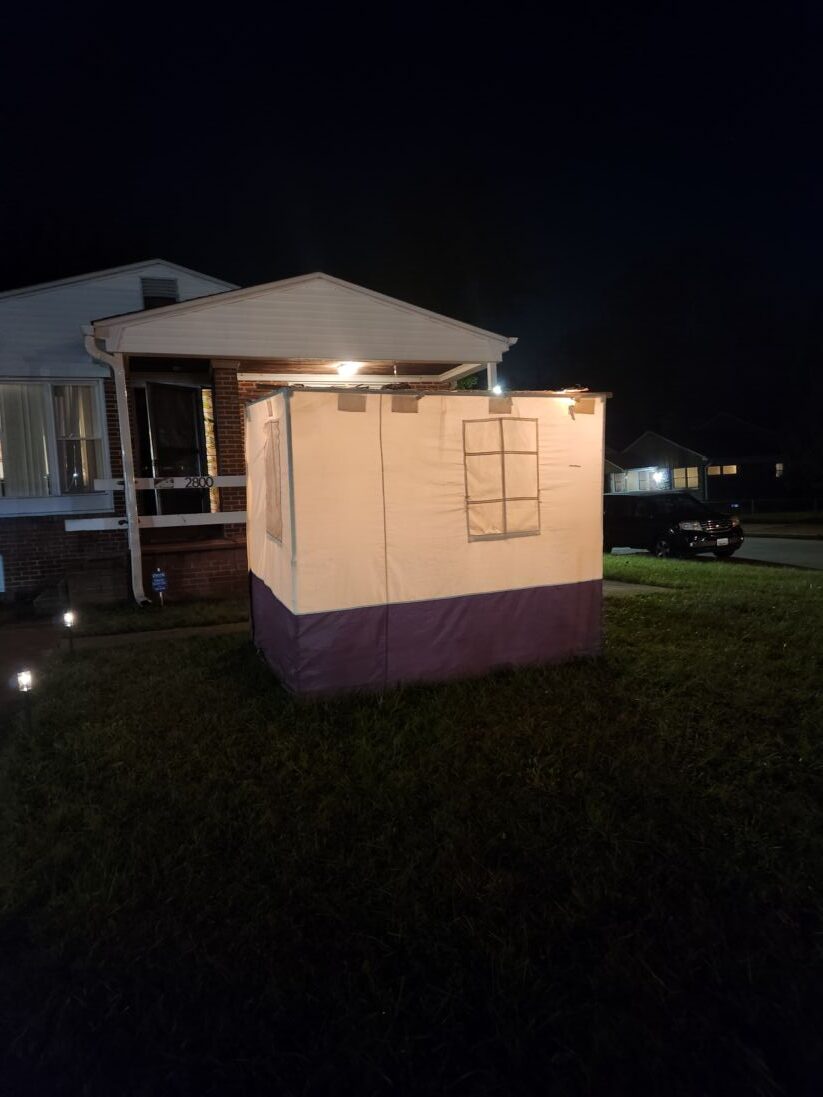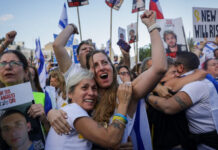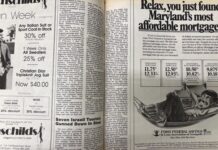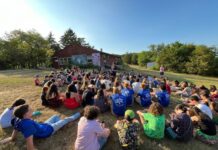
For those not familiar with the Cheswolde neighborhood of Northwest Baltimore, it is quiet, residential and adjacent to Greenspring Avenue. Most homes in the neighborhood are single-family residences with large backyards. There are also some apartment complexes located in the area.
The neighborhood is part of the Baltimore Eruv, making it an excellent place for young families. It is also within the area serviced by Hatzalah, the community ambulance service. There are many synagogues and many Jewish families in the close-knit community.
Fifty years ago, this situation was quite different. When Sukkot approached, there were only about two sukkot in the entire neighborhood. Today, almost every house and some apartments have sukkot, making the festive holiday even more so.
Each sukkah is unique, and many families have a story about their sukkah and some of the decorations that adorn it.
The sukkah of Paula and Fred is one of those unique tales. The framework for their sukkah is a legacy handed down from Paula’s grandfather, who lived in Boro Park, New York. After he passed away, Paula’s father inherited the framework and then passed it down to his daughter and her husband.
The most unique decoration in the sukkah is a light fixture given to them by their son. He bought it as a joke, thinking it was the ugliest thing he had ever seen. Much to his chagrin, his parents loved it and have hung it in their sukkah every year for over 30 years.
Another Cheswolde sukkah is immediately next door to the first. Rachel and Daniel have put up a sukkah each year they have lived in Cheswolde and often invite guests to join them. They have also found an unusual way to use a Sukkot gift from the in-laws: a charming picture of a lulav and etrog sits in the middle of a tablecloth that now hangs in their sukkah. They also decorate the sukkah with flowers, greenery and little tea lights.
Another sukkah on the same block sits right in front of the house of Avi and Devorah. They love to have their children create decorations for their sukkah. One daughter enjoys making decorations out of colored straws. Their sukkah is filled with colorings of each of the Jewish historical figures that were given out in the Jewish school they attend.
Just down the block sits the sukkah of Joy and Shlomo. Since they live in proximity to some of their adored grandchildren, happy sounds are always coming from their lovely sukkah. In fact, many of the posters were not created by their grandchildren, but rather are remembrances of their own children’s childhoods, made in yeshivas in Baltimore. Their children are all adults with kids of their own, but in their sukkah are hand-drawn pictures of rabbinic greats and the four species. Their sukkah was the design of Shlomo’s father, who was both a rabbi and a physicist.
Just two short blocks away is the sukkah of Debi and Marvin. They have not lived in Cheswolde as long as some of the other families in the neighborhood, but their sukkah fits right in. Their original sukkah had wooden walls with an intricate architectural design and was difficult to assemble. Their current sukkah is a more modern structure that is easier to put up. It is decorated with posters of various Jewish themes and pictures of the seven species. The seven species (Shivat Haminim) are seven agricultural products — wheat, barley, grapes, figs, pomegranates, olives and dates. They receive special treatment in the Torah as being particularly connected to the land of Israel. These grains and fruits are symbolic of the land’s bounty and of God’s blessings.
While it seems that just about every house in Cheswolde has a sukkah, there are significant differences in both design and decoration. Still, all the sukkot symbolize their owners’ devotion to God and the Jewish people. They make for an interesting and enjoyable walk through Cheswolde and add a festive element to the Sukkot holiday.
Paula K. Minsk is a freelance writer.




